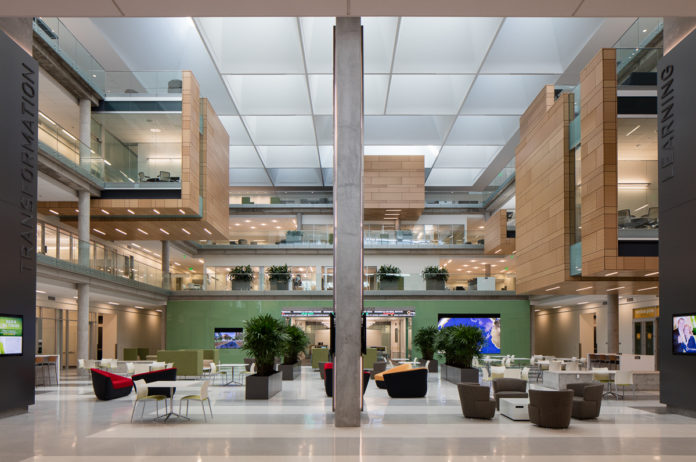
Michelle Perez | Reporter
Upon finishing construction, in 2015, Baylor’s Paul L. Foster Campus for Business and Innovation building, was officially certified Gold in Leadership in Energy and Environmental Design (LEED).
According to LEED’s website, “LEED certification provides independent verification of a building or neighborhood’s green features, allowing for the design, construction, operations and maintenance of resource-efficient, high-performing, healthy, cost-effective buildings”.
When beginning construction for a LEED building such as Foster, it was important to check the list of features that need to be put in place in order to be LEED certified. For example, the large windows in Foster were essential to their gold certification. Since the windows in Foster are very large, it let in natural light which reduces the need for another source of light in the day time, such when using florescent lightbulbs.
Smith Getterman, director of sustainability and special projects explained that while Foster is the highest rated building on campus, there a many more that are LEED certified, such as Truett Seminary’s Baugh-Reynolds Campus, and the Highers Athletics Complex/Simpson Center.
“Truett was different in that we had already build Truett and then just a few years ago went back through and retrofitted it to make it a LEED certified building, so we went back through that process and we made it what’s called LEED existing building certification. It was our first one,” Smith Getterman, director of sustainability and special projects, said.
Getterman explained that although the different modifications that were made when constructing Foster such as sustainable landscaping and irrigation system are better for the environment, it is very expensive, and the practices are not currently fully developed to be used in different buildings.
For example, the Baylor Science Building is not LEED certified because of the different labs that dispose of certain chemicals. This make it difficult for a building of its purpose to gain certification of any kind.
In the future, Baylor plans on continuing to get LEED certification for existing buildings and new buildings such as the Mark and Paula Welcome Center that is currently under approval.
“I think we’re always looking at what’s best for the university as we move forward, I think that LEED certification is something that we certainly work out with each project,” Getterman said.
Braxton Bobo, Allen junior, who is a Management Information Systems major said that while he values the traditional buildings on campus, there is something unique and refreshing about Foster.
“The business building has a very updated and renovated look that helps going to class a little bit easier.” Bobo said. “Usually being on computers all day can make you want to go outside but because of all the natural light and spacious classrooms it makes being on computers enjoyable and easy.”





